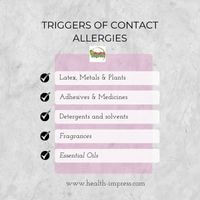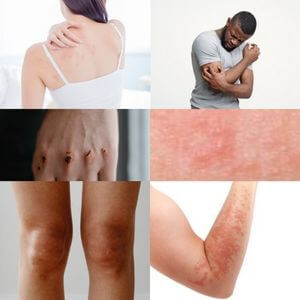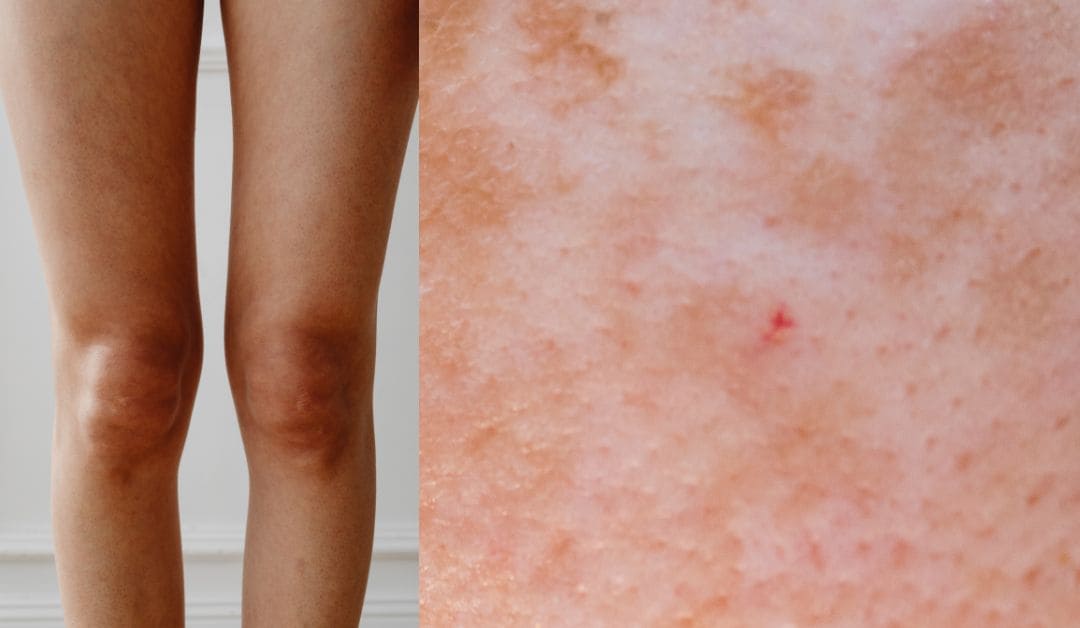General Health, Men's Health, Women's Health
What is Contact Allergy?
Contact allergy, also called contact dermatitis, can lead to severe skin reactions because a number of chemical or vegetable substances can irritate the skin. Redness, burning, or itching are normal skin reactions, for example to a harsh cleaning agent. For these reasons, I would like us to know something about “what is contact allergy”.
In the case of dermatitis, it has to be noted that the immune system is overly sensitive, sometimes, to only very small amounts of certain substances that do not have to be aggressive at all. Often, for example, a metal, fragrance, or latex could be the trigger.
We know that it can lead to severe skin reactions. In contrast to many other allergies, the symptoms are not noticeable immediately, but usually only after 1 to 3 days. It also develops over a long period of time in which one repeatedly comes into contact with the triggering substance.
What are the Symptoms of Contact Allergy?
It leads to eczema. Typical signs are;
- Reddish, often indistinct rash
- Swelling
- Itching
- Dry skin
With a strong allergic reaction, the skin can become tight and painful. Blisters can also form and when they burst, the skin wets, crusts, and then flake off later.
The symptoms are initially limited to the area of the body that had contact with the trigger. Examples of these, are the hands and most especially the back of the hands and fingers. Allergic rashes are also more common on the face (especially on the eyelids and lips), neck, lower legs, and feet. How strong the reaction is depends mainly on what substance the skin has been in contact with and for how long.
It is typical of a contact allergy that allergic reactions can later occur in areas of the body that have not had any contact with the allergen (a substance that causes an allergic reaction). This is called the scatter reaction.
What causes contact allergy (contact dermatitis causes)?
Common triggers of a contact allergy are;
- Metals (such as nickel and cobalt)
- Latex
- Adhesives (also from plasters)
- Plants (such as chamomile and arnica)
- Fragrances (in cosmetics such as lipstick, perfumes, and soaps)
- Detergents and solvents
- Essential oils
- Medicines that are applied to the skin

With the first contact, the body forms defense substances (antibodies) against the trigger (allergen). This means that it is more sensitive to the substance in question.
Noticeable complaints only arise over time and through repeated contact with a substance. For example, hairdressers who work with chemical hair dyes, or permanent wave liquid on a daily basis. Some people are generally prone to allergies and are more likely to develop a contact allergy.
What is the Frequency of Contact Allergy?
About 8% of all adults have a contact allergy. Women get contact allergies more often than men. Contact allergies are responsible for around 10% of all occupational diseases. Frequently affected occupational groups are hairdressers, beauticians, nurses, bakers, office workers, metal workers, and bricklayers.
How does Contact Allergy develop?

This type of allergy usually only develops in adulthood. Often, the symptoms subside if they are treated and the triggers avoided. It can also lead to chronic contact eczema. With this, the skin thickens, keratinizes (changes or becomes changed into a form containing keratin), and forms painful cracks.
How is contact dermatitis diagnosed (how to get rid of contact dermatitis fast)?
Symptoms alone do not make it clear whether it is an allergic reaction or not. However, an allergic rash often looks a little different than a non-allergic rash: blurred edges of the affected skin areas are more likely to indicate an allergic reaction. In addition, allergy-related rashes occur more often in different parts of the body.
In the diagnostic interview, the doctor will ask which substances there was contact with in the days before the symptoms occurred – and whether you were regularly exposed to certain substances. A patch test can be used to find out whether the symptoms are actually allergic. To do this, a plaster with the suspected allergens is stuck on the back for 1 to 2 days. If a rash forms in these areas, this indicates an allergy to the substance in question.
However, it is possible that an allergy is first triggered by a patch test. It is all the more important that the doctor informs and carefully selects which substances are being tested for.
What are the treatment options for contact allergy?
Allergic skin reactions are usually treated with creams, ointments, or solutions containing cortisone.
The most important thing, however, is to avoid contact with the trigger: For example, if you are allergic to nickel, make sure that jewelry, buttons, or belt buckles that come into contact with your skin do not contain nickel.
If contact cannot be avoided in everyday work, gloves and protective clothing, for example, can help. It may also be necessary to switch to other activities. If you suspect a work-related allergy through contact, it makes sense to notify the authorities through the dermatologist or company doctor, if any.
Additional Information about contact allergy
The family doctor’s practice is usually the first point of contact when you are ill or need medical advice if you have a health problem. They provide information on how to find the right practice, how to best prepare for a visit to the doctor, and the important steps you need to take to get help if needed.
Frequently Asked Questions about Dermatitis
Is contact dermatitis contagious?
The answer as to whether contact dermatitis is contagious, and can spread from one person to another is a big no. There are no infectious forms of dermatitis. No one else can contract it from you if you have it.
What symptoms indicate contact dermatitis?
Rash that itches. Hyperpigmented (darker-than-normal) leathery patches, usually on brown or Black skin. Usually on white skin, dry, cracked, and scaly skin. Bumps and blisters that may occasionally ooze and crust.
How can contact dermatitis be brought on?
Cosmetic components like preservatives, scents, hair color, and hardeners for nail polish are examples of allergens that frequently result in allergic contact dermatitis. Metals used in jewelry, such as nickel or cobalt.
How is contact dermatitis treated?
Apply 1% hydrocortisone cream or ointment to the irritated region (Cortizone 10, others). You can purchase this product from a pharmacy without a prescription. For a few days, use it once or twice every day. Or use calamine lotion.
Does contact dermatitis resolve on its own?
A kind of eczema known as contact dermatitis can be brought on by an allergic reaction or a toxic reaction to a chemical. In most cases, the rash will go away on its own if you can keep away from the thing(s) that caused it in the first place.
Is contact dermatitis contagious?
The appearance of allergic contact dermatitis spreading over time is common. In actuality, this shows delayed allergic reactions. The erroneous perception that dermatitis is contagious or spreading may result from a number of circumstances. Greater exposure locations might see outbreaks first, then places with lower levels of contamination.
Is stress a factor in dermatitis?
Cortisol levels rise in response to stress (sometimes called the stress hormone). Stress can lead your body to create excessive amounts of cortisol, which can cause your skin to become abnormally oily. After then, an eczema eruption may result.
How long does contact dermatitis take to resolve?
When the allergen or irritant is removed from your skin, the symptoms of contact dermatitis often go away within three weeks. If your symptoms persist for more than three weeks, the rash spreads rapidly, or if it gets so uncomfortable that it interferes with your sleep or everyday activities, see a doctor.
Is eczema a kind of contact dermatitis?
Eczema of the contact dermatitis variety is brought on by exposure to a specific chemical. The term “eczema” refers to a set of ailments that make the skin dry and itchy. If the chemical causing the condition is found and avoided, contact dermatitis typically gets better or goes away entirely.
What dermatitis cream can I use?
Ordinarily, hydrocortisone cream purchased over the counter works to relieve mild skin inflammations. A doctor typically suggests a prescription of corticosteroid cream to treat the inflammation and irritation of the majority of dermatitis types and may also offer an oral antihistamine to treat extremely itchy skin conditions.
What cures contact dermatitis the quickest?
Your doctor could suggest a topical corticosteroid (a cream or ointment applied directly to your skin) if your skin is also painful and inflamed. This medication can fast lessen the irritation. Corticosteroids are a safe and reliable form of treatment for contact dermatitis when administered as prescribed by a physician or pharmacist.
Are dermatitis and Vaseline compatible?
Petroleum jelly is an excellent treatment for eczema flare-ups because it is easily tolerated and effective for sensitive skin. Petroleum jelly provides moisturizing and calming characteristics that reduce irritation, redness, and discomfort, in contrast to some products that can sting and be uncomfortable.
Conclusion
We now know what dermatitis is. Most times, it is not a cause for concern. However, one should seek medical assistance if the rash is close to the eyes, or mouth, or covers a large area of your body and does not improve with home remedies. Your doctor is the best person to prescribe a more potent remedy if home treatment doesn’t soothe the skin. They are also best placed to recommend skin specialists if need be.


